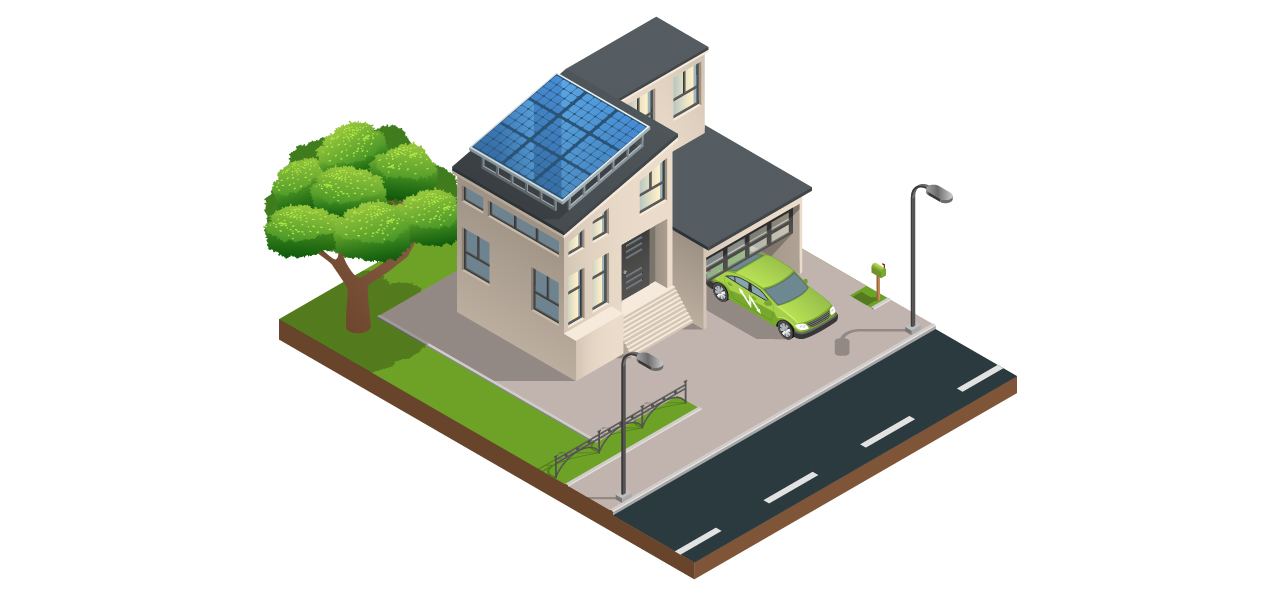
There are a number of very good reasons why installing a solar electricity system for your home has become a no-brainer by 2020. The foremost is the sharply dropping prices of solar equipment (panels included) that have cut down the upfront capital expenditure.
The second is the subsidy provided by the Govt. of India. In addition, state nodal agencies also offer subsidies in different states. If you live in a Special Category state like the North-Eastern states, Jammu & Kashmir, Uttarakhand, Himachal Pradesh, Sikkim and Lakshadweep, the subsidy can be up to 70%. For grid-connected units, wherein your installation feeds surplus electricity back, the subsidy declared by the Ministry of New and Renewable Energy (MNRE) is higher than the 30% that is given otherwise.
Then, there are other benefits provided like a generation-based incentive. Visit this link for details. Furthermore, to coax households to undertake the change to solar, banks have been urged to treat this as home improvement and provide a loan at the same rate as for home loans. Most Public Sector Banks have sent out notices to their branches emphasising this policy thrust.
Here are some general guidelines for you to understand that this is not a very complex exercise (though actually receiving the subsidy can take unduly long due to the waiting period). The MNRE offers the subsidy only if you buy solar panels made in India. The equipment provider will check your location and then complete the job in a few days. One of the leading vendors is Genus, which will guide you through the entire process and provide original equipment. Depending on the efficiency of the module, local weather conditions, local solar radiation and the angle of the roof, the thumb rule is that 10 sq. metres of the shadow-free area is required for a 1 KW installation. Calculating your appliances load, you will then be told how many KWs to go for.
What if you do not have enough free space on the roof, or there is a building nearby casting a shadow? There are ground-mounted options too.
Before you visit a vendor, you might be curious about approximately how many years your investment will pay off in. And then, what if you change house in between. The payback period is short compared to the 25-year lifespan of the installation. Even if you do change house even before that, the value of your property would go up with the installation. A no-brainer we said above. Yes, according to a study done for metro cities in Madhya Pradesh, taking typical weather conditions and the 30% GOI subsidy, the break-even point is 4-5 years for a 5 KW installation (7 years for a 3 KW unit). Even without subsidy, you have to only wait 6 years (7 years for 3 KW) before your solar rooftop installation has paid back for itself!
Should you go for an off-grid installation or grid-connected unit? There are pros and cons of each.
Off-Grid: This is suitable for areas which have a frequent and prolonged power failure. You install the solar system to be assured of uninterrupted power supply. But then, you also need a battery storage system connected to feed power back to your residence when the solar power is not being generated (cloudy days/evening). This adds to the per KW cost. Plus, batteries require periodic replacement.
Grid-connected: No batteries are needed here. The utility grid becomes your battery, feeding you power when your system is not generating. With a net-metering system installed, you get the benefit of the power you supply to the grid. It works like a bank balance. Obviously, this is not suitable for areas with load-shedding.
Not interested in upfront capital expenditure even if the payback period is small?
You can go for a Renewable Energy Service Company (RESCO). They undertake the capital expenditure of installation as well as the maintenance. You pay a fixed rate per unit as per a Power Purchase Agreement you sign. The RESCO then enjoys the surplus power sale to the utility.
Finally, visit Genus for more.
